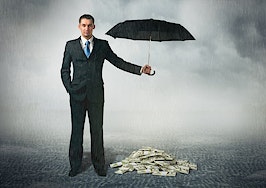Businesses typically have a policy of expensing (that is, currently deducting instead of depreciating) items that cost less than a threshold amount.
It’s simply not worth the trouble of depreciating low-cost items over many years. The amount businesses establish as their expensing thresholds varies widely. Smaller businesses have a threshold of $100-$200, while large businesses have thresholds in the thousands.
Until now, the IRS provided no guidance on what the threshold for deductible, minor expenses should be. It was always possible that the IRS would argue that a taxpayer’s threshold was too high, and that an expense should have been depreciated.
However, this has changed. New IRS regulations that go into effect on Jan. 1, 2013, enshrine this long-term threshold expensing practice into law by establishing a new “de minimis expensing safe harbor.” (IRS Reg. 1.263(a)-1(f).) For the first time, the IRS has created specific dollar amounts that may be expensed as “de minimis” (Latin for minor or inconsequential).
To qualify for this de minimis expensing safe harbor, a taxpayer must:
- establish at the beginning of the tax year a written accounting procedure requiring it to expense amounts paid for property either (1) costing less than a certain dollar amount, and/or (2) with an economic useful life of 12 months or less;
- actually treat such amounts as currently deductible expenses on its books and records; and
- file an election with its tax return for the year to use the de minimis safe harbor.
How much you get to deduct under this safe harbor depends on whether you have an “applicable financial statement.” This is a certified financial statement by a CPA, or a financial statement (other than a tax return) your business files with the SEC or other state or federal agency (not including the IRS).
If, like most smaller taxpayers, you don’t have such a financial statement, you may use the de minimis safe harbor only for property whose cost does not exceed $500 per invoice, or $500 per item as substantiated by the invoice. If the cost exceeds $500 per invoice (or item), no part of the cost may be deducted by using the de minimis safe harbor.
Example: Abe has no applicable financial statement. Abe purchases 10 printers at $250 each for a total cost of $2,500 as indicated by the invoice. Abe has accounting procedures in place at the beginning of the year to expense amounts paid for property costing less than $500, and Abe treats the amounts paid for the printers as an expense on its books and records. The amounts paid for the printers meet the requirements for the de minimis safe harbor. Abe may currently deduct the entire amount as ordinary and necessary business expense. (IRS Reg. 1.263(a)-1(f), example 1.)
If you have an applicable financial statement, then you may increase the per item or per invoice amount up to $5,000.
When you make this election, it applies to all expenses you incur that qualify for the de minimis safe harbor. You cannot pick and choose which items you want to include.
To take advantage of the de minimis safe harbor, you must file an election with your tax return each year, using the following format:
Section 1.263(a)-1(f) de minimis safe harbor election
Taxpayer’s name:
Taxpayer’s address:
Taxpayer’s identification number:
The taxpayer is hereby making the de minimis safe harbor election under section 1.263(a)-1(f).
If you want to take advantage of the de minimis safe harbor in 2014, be sure to adopt a written accounting policy to do so by the end of December 2013. Otherwise, you’ll have to wait until 2015 to use it.
Stephen Fishman is a tax expert, attorney, and author who has published 20 books, including “The Real Estate Agent’s Tax Deduction Guide,” “Working for Yourself,” “Deduct It!,” and “Working with Independent Contractors.” His website can be found at fishmanlawandtaxfiles.com.







